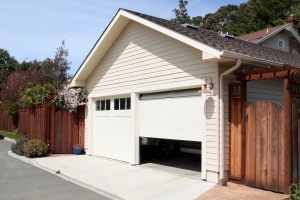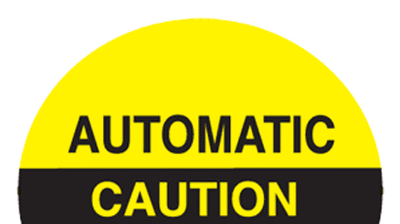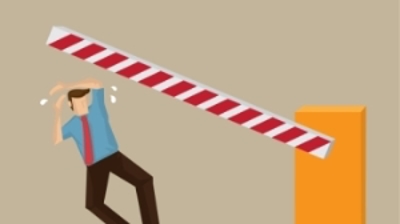Residential Garage Doors

Personal Injury Claims
Download PDF of this article here
By Michael Panish
Door Expert Witness
Over the past 15 years, I have been involved in over 100 residential garage door injury cases and I am generally retained as the door expert almost equally by plaintiff and defense. I provide an unbiased neutral assessment of every claim.
The following article is derived from various common conditions that have led to a claim. Reviewing some of the most recent resolved cases has prompted me to write this article in an attempt to provide some substantial information to others contemplating litigation. It is almost impossible to include every variation, nuance, or combination of events pertaining to garage door injuries in this short article. The cases discussed in this article are based upon multiple previous claims that are similar in nature. I am repeatedly contacted by attorneys describing the same kind of injuries involving garage doors. It is not unusual for my office to have multiple active claims with very similar circumstances. If you are an attorney considering taking a potential garage door injury case, it is probable that I have previous experience with a similar or identical situation to your potential claim.
Garage Door injuries pertaining to rental properties:
Amputations of toes and fingers are probably the most common garage door injury attributed to residential garage doors. It has been my experience as the retained door expert that the majority of cases that involve garage door related amputations occur in rental properties.
Who is responsible? Why are so many claims from rental properties?
- The landlord has failed to inspect the overall condition of the rental property prior to or during tenancy.
- The landlord does not know, or care about the condition of the garage door. Because the property was purchased to be torn down for future development, current circumstances have created development delays so the property was rented to a short term tenant.
- The property was inherited from elderly relatives that formerly lived there. The new owners are not professional landlords, and never thought that any defects of the property existed or were important.
- The garage door operator needed replacing, but the landlord did not want to spend the money or effort as the tenant was not using the garage to park cars, only store household goods.
- The garage door does not have current compliant safety devices installed or appropriate hardware such as an exterior door handle to move the door up or down.
- Improperly maintained or deferred maintenance because of cost.
- Section 8 or low rent tenancy.
- Tenants have inappropriately used the garage door or created damage to the door and opener.
- Parental supervision of tenant children is lacking.
- Tenant did not pay the electric bill and the automatic garage door opener cannot function.
- The owner has hired a management company that is responsible for oversight and maintenance, and does not want to provide the appropriate maintenance due to cost.
- A management company provides inappropriate repairs by unskilled and untrained workers.
Every garage door must be properly balanced to operate safely
Many amputations of fingers and toes have occurred as a result of an improperly balanced garage door. These cases are often the result of limited interaction with a seldom used sectional or single panel garage door. I have been retained on many cases where a tenant only used the garage door a couple of times prior to sustaining an injury, but had been living in the property for a few years.
In other claims, tenants attempting to exit the garage door as a pedestrian have had the door violently slam down on top of their head and neck or it landed on their feet, breaking bones or trapping a couple of toes, smashing them beyond recognition. Fingers have been crushed or cut off, and hands have also become crushed between the meeting sections of a sectional garage door as the door rapidly descends because of improperly tensioned, broken or disconnected springs.
Tenants, attempting to fix a garage door on their own have also suffered severe injuries to all parts of the body. One tenant actually became entangled in the trolley release cord, and fell off of the ladder she was using, hanging herself in the process. Tenants often blame the landlord for their injury because the owner failed to make timely repairs. Sometimes, that blame is legitimate, as multiple requests to have something fixed have gone unanswered. Other times, the tenant was acting without allowing the landlord a reasonable amount of time to have the door repaired. Regardless, most garage door repairs should be made by qualified personnel or trained professional garage door service providers.
In many amputation claims, disconnected or malfunctioning automatic garage door openers have meant that users have had to manually open or close the garage doors. Many of the people that have become injured were unaware that the door was improperly balanced prior to their incident because they generally relied upon the automatic controller to open and close the door for them. In some cases, no handle on the exterior of the door was installed. When the door was manually pushed or pulled, the tenant was unable to control the movement of the door, and inadvertently reached between pinch points (mating locations of individual sectional panels) of the moving door.
In almost every injury case, the landlord has been included in the blame for the incident. In some of those cases it was determined that the tenants had abused and misused the garage door systems creating their own unsafe condition. Some of the garage door injuries were directly attributed to deferred observations and no professional maintenance on the part of the ownership, while others were due to improper installation issues and bad service providers. In most of these claims, the dangerous condition of the garage door is due to deferred maintenance, missing hardware, improper spring adjustments, failed springs or cables, or defective automatic door operators.
Basic components of a garage door system:
There are many different types of garage doors found in residential properties. In antique homes, hinged carriage doors are often found. Sliding barn type doors were once common. As hardware was developed, pivot hinges and stretch springs allowed single panel doors to be used. Single panel overhead doors, once built on-site, have all but been replaced by factory supplied sectional doors. Sectional doors are probably the most common type currently installed in the United States. Sectional doors have a variety of benefits that single panel overhead doors lack. Sectional doors offer a variety of options in design, flexibility of installation, insulation, choice of materials, and style that were not common in the past.
Sectional doors generally employ one of two types of counterbalance systems to motivate them. In certain geographic areas where cold temperatures are common, tensioned stretch springs are frequently installed. They assist the operator (manually or mechanically) to allow the sectional door to open and close without any stress to the system. A more modern and robust common system includes torsion springs attached to a rotating rod with wire cables and pulleys.
In most garage doors spring tension is responsible for smooth operation of the garage door. The springs stretch and retract or coil and uncoil as different positions of the garage door are reached. In general, garage doors have the most tension on the springs when the door is fully closed. A fully opened door has little or no tension on the power assist springs. A properly tensioned and balanced sectional residential garage door should remain stationary approximately mid-point in its path of travel. It may drift slightly up or down, but it should remain relatively neutrally buoyant.
In order for a manual garage door to become an automatic garage door many of the same basic spring components must be properly installed and functioning. For a more comprehensive discussion of how sectional garage doors work, visit www.constructionwitness.com and read several other articles about overhead and sectional garage doors.
If a residential garage door is properly balanced, it is easy to attach an automatic door operator to assume the task of opening and closing the garage door. No properly adjusted and functioning automatic garage door controller should be able to overcome the forces of a defectively operating unbalanced garage door.
Basic safety devices available for residential garage doors:
Most new garage door operators include several safety devices to protect all users. In most basic systems currently sold there are at least two automatic safety systems to protect the public from being crushed by the closing door.
- One basic function includes an automatic reverse of the door when in the opening or closing cycle. If the door encounters obstructive forces, it generally will stop and move in the opposite direction of travel. In the closing mode, the downward force is often checked by placing a small stuffed animal on the threshold floor of the garage. The motor controller has a field adjustable force control that is set to react when a soft obstruction, such as a teddy bear is slightly compressed. This simulates the potential obstruction that may be caused by a small child in the path of the downward door travel.
- The second safety device, commonly in usage are photo electric beams. These beams when properly located and integrated across the full width of the garage threshold will not allow the door to close if the beam is broken by something in the threshold path of travel of the door.
From the end user's perspective, a basic residential automated garage door should operate without concern due to all of the available safety products. From a professional installer's perspective, there are numerous requirements that need to be addressed for an automatic operator to function safely.
The difference in obligation between the two is expressed in the installation manual vs the owner's manual. Normally, there are several systems that need to be calibrated by the installer that the homeowner will never have any reason to interact with. That is also one of the reasons why a professional service provider should inspect and maintain an automatic operator on a routine annual basis. Initially, the garage door operator installer sets system parameters that assure safe operation of the automatic garage door operator. These systems need to be checked and verified for continued safe operation of the door operator by a professional trained service provider.
Maintenance and homeowner obligations differ from professional service providers
How garage doors are professionally installed, maintained and evaluated is important. However, homeowners and tenants living in a single family home or condo should take it upon themselves to determine whether or not the garage door they use daily is working properly. Generally, no maintenance is ever done by most homeowners to the average home garage door, until some component fails requiring professional repairs. Tenants should quickly communicate with the landlord if problems with the garage door occurs, unless their lease agreement requires the tenant to maintain the property.
Manufacturers recommend visual inspection of all attached hardware at least once a month in a residential setting. Professional annual service and tuning is suggested. In reality, I do not know many homeowners that observe, inspect, or proactively service their garage doors. Usually, the thing that promotes maintenance is a failure of some door component. The motor will stop working, a spring will break, or the garage door gets stuck in its track. This is not the industry suggested protocol to assure safe operation and usage of any garage door, but is all too often what takes place.
Landlord responsibilities pertaining to garage doors
(excluding negotiated lease obligations)
In general, a residential rental property landlord has a totally different level of obligation than a private homeowner. Anytime a property is rented to a tenant, and several times during the course of the year, a thorough inspection of all aspects of the rental property should take place. The requirement for semi-annual inspections should be written into the lease agreement with the tenant. Landlords should evaluate, document, and photograph the condition of all systems (including the garage door and automatic operator) throughout their property prior to renting to a tenant. They can then compare any change or damage that can be attributed to their tenant, and verify the need for repairs prior to an injury occurring. This preliminary observation is beneficial to both the landlord and the tenant. It quantifies all conditions of the rental property before the tenant moves in, and can later serve as proof if any damage created by the tenant is disputed prior to moving out of the property.
The majority of claims pertaining to garage door injuries have occurred in rental properties. Some reasons for these claims are listed above in this article. Fewer injury claims involve private homeowners, but these are generally attributed to new construction defects of the garage door and operator or improper installation of some garage door component by an owner or substandard professional service provider.
Mike Panish provides his expert services for all types of overhead doors, garage doors, roll up doors, and all types of doors (manual and automatic). He has been retained on over 100 cases specifically pertaining to garage door related injuries since the year 2000. He is the most frequently retained expert witness for garage door personal injury and wrongful death claims across the United States. His expert involvement is for both plaintiff and defense. He is well known, highly respected, and is established as the industry expert of choice. He has authored numerous articles pertaining to garage doors, overhead doors, and all types of doors. For a complete list of all of his expert services, areas of expertise, and published articles visit his website at www.constructionwitness.com.



